Japan’s rich cultural heritage is on full display at Hase Temple, home to one of the country’s most impressive wooden Buddhist sculptures. Towering over 11 meters tall, the single-piece cypress statue of the Goddess of Mercy, Kannon, showcases unparalleled craftsmanship and spiritual devotion from centuries past. Beyond the temple’s iconic centerpiece, visitors can enjoy the serene gardens and traditional Japanese architecture, uncovering the enduring significance of this sacred site. A guided tour promises a captivating encounter, inviting deeper exploration into the temple’s centuries-old traditions and the lasting impact of Japan’s cherished spiritual legacy.
Key Points

- The 11-meter-tall wooden statue of Kannon, the Goddess of Mercy, at Hase Temple showcases unparalleled craftsmanship and spiritual significance.
- Hase Temple, founded in 736 AD, offers a serene and immersive cultural experience with its beautifully landscaped gardens and traditional Japanese architecture.
- The temple’s rich history spanning over a millennium and its reverence for Kannon provide an insightful glimpse into Japan’s cherished spiritual and cultural heritage.
- Visitors can enjoy stunning views of the nearby coastline and city from the temple’s tranquil grounds, creating a peaceful respite.
- A guided tour of Hase Temple allows for an in-depth exploration of the site’s largest wooden Buddha, lush gardens, and centuries-old traditions.
Historical Background of Hase Temple
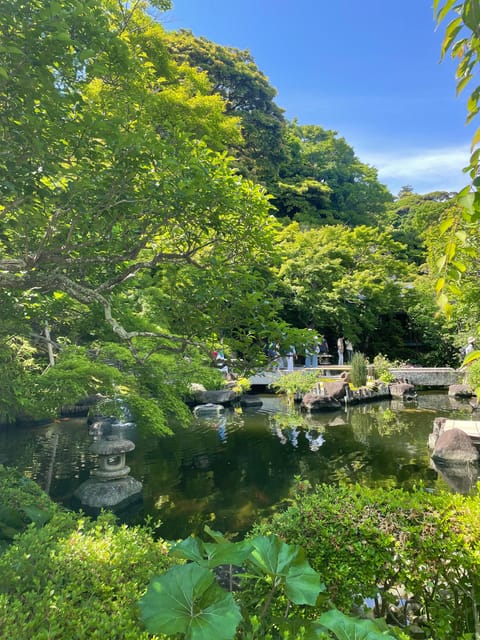
Founded in 736, Hase Temple has a long and storied history that spans over a millennium. Located in the scenic city of Kamakura, the temple was established during the Nara period and has since played a significant role in Japan’s cultural and religious landscape.
Over the centuries, Hase Temple has undergone various renovations and expansions, yet it has remained a beloved destination for locals and visitors alike. Today, the temple’s rich heritage and architectural beauty continue to captivate those who seek to enjoy the essence of traditional Japanese culture.
You can also read our reviews of more tours and experiences in Kamakura.
Impressive Kannon Statue and Craftsmanship

The centerpiece of Hase Temple’s allure is its impressive 11-meter-tall wooden statue of Kannon, the Goddess of Mercy. This remarkable sculpture, carved from a single piece of cypress wood, showcases the unparalleled craftsmanship of the temple’s artisans.
The level of detail and precision in the statue’s intricate features, from the serene facial expression to the delicate folds of the robes, is a testament to the spiritual devotion and technical mastery of the creators. Visitors are often awestruck by the sheer scale and grandeur of this iconic representation of Kannon, which stands as a centerpiece of the temple’s spiritual significance and cultural heritage.
Serene Temple Grounds and Gardens

Alongside the impressive Kannon statue, the temple grounds of Hase Temple offer visitors a serene and verdant oasis. Winding paths meander through beautifully landscaped gardens, where seasonal flowers bloom in vibrant colors.
The tranquil atmosphere is accentuated by traditional Japanese architecture, including pagodas and pavilions, seamlessly blending with the natural surroundings. Visitors can stroll along the coastline, taking in stunning views of the nearby city and the Pacific Ocean. This idyllic setting provides a peaceful respite from the bustling city, allowing visitors to enjoy the rich cultural heritage of Japan and create cherished memories of their visit.
Cultural Significance and Traditions
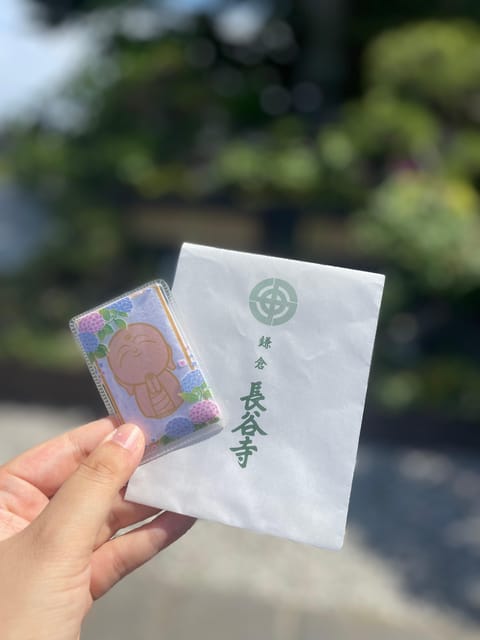
Beyond the serene temple grounds and gardens, Hase Temple holds deep cultural significance and rich traditions. Founded in 736 AD, the temple has played a vital role in Japan’s spiritual and cultural history.
Visitors can enjoy the centuries-old practices and beliefs that continue to shape the lives of the local community. From the intricate architectural design to the carefully curated rituals, every aspect of Hase Temple reflects the reverence for Kannon, the Goddess of Mercy.
More Great Thing To Do NearbyHighlights of the Guided Tour
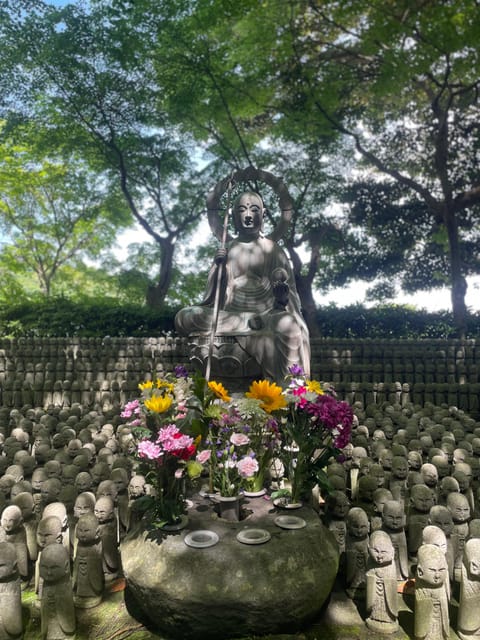
Visitors embarking on the guided tour of Hase Temple are treated to a captivating exploration of the site’s most remarkable features. The centerpiece of the experience is the awe-inspiring 11-meter-tall wooden statue of Kannon, the Goddess of Mercy. Crafted with meticulous attention to detail, this impressive sculpture showcases the incredible artistry and spiritual devotion of the temple’s creators. Beyond the iconic Buddha, the tour also immerses guests in the temple’s lush gardens, where they can witness the seasonal beauty of traditional Japanese flora. Throughout the experience, the knowledgeable guide provides insightful commentary, elevating the visit into a rich cultural encounter.
| Feature | Description |
|---|---|
| Kannon Statue | Largest wooden Buddha in Japan, 11-meter-tall representation of the Goddess of Mercy |
| Temple Grounds | Beautiful gardens with seasonal flowers, winding paths, traditional Japanese architecture |
| Coastal Views | Stunning vistas of the nearby coastline and city from the temple’s elevated position |
| Cultural Immersion | Opportunity to deeply experience Japan’s cherished traditions and spiritual heritage |
- Kamakura: Great Buddha, Hase Temple, & Komachi Street Tour
- Full Day Kamakura Private Tour With English Speaking Driver
- Kamakura: Full Day Private Tour With English Guide
- From Tokyo: Kamakura Private Customize Tour by Luxury Van
- Kamakura: Private History and Heritage Tour by Rickshaw
- Kamakura Through Time (Hiking, Writing Sutras…)
Logistical Information and Tour Details
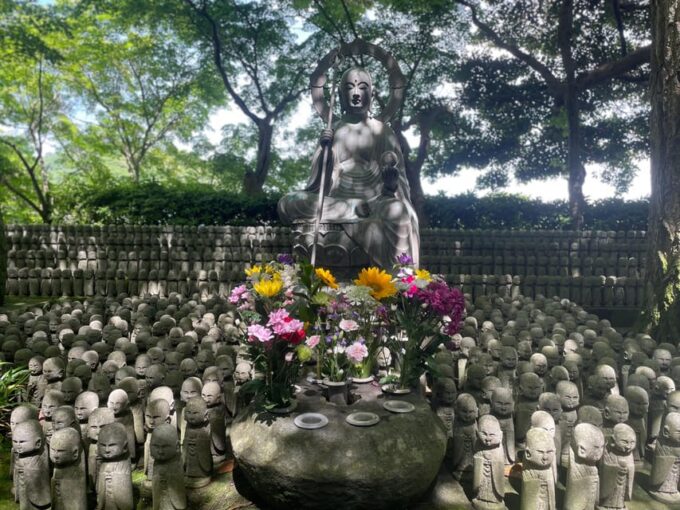
The guided tour of Hase Temple offers convenient scheduling and logistical details to ensure a seamless experience for participants. The tour lasts approximately 3 hours, allowing ample time to explore the temple grounds and take in the rich cultural heritage.
With a small group size limited to 8 people, the tour provides a personalized and intimate setting, facilitated by an English-speaking guide. Flexibility is built in, as the tour features free cancellation up to 24 hours in advance.
Whether seeking to appreciate the awe-inspiring 11-meter-tall wooden Buddha or to soak in the serene gardens, this guided experience promises a memorable journey through Japan’s cultural gems.
Visitor Experiences and Memorable Moments
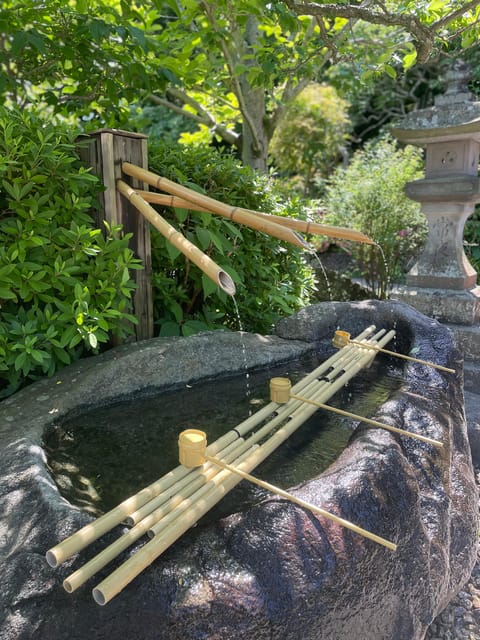
Stepping foot into the serene temple grounds, visitors are immediately captivated by the breathtaking sight of the towering 11-meter-tall wooden Buddha statue. Its incredible craftsmanship and spiritual significance leave a lasting impression, fostering a deeper appreciation for Japan’s rich cultural heritage.
As visitors explore the temple’s beautifully landscaped gardens, they’re treated to seasonal floral displays and stunning views of the nearby coastline. The winding paths through the traditional architecture offer ample opportunities to take in the tranquil atmosphere, creating cherished memories of Japanese traditions.
This cultural experience leaves guests with a newfound understanding and respect for the country’s timeless spiritual and artistic traditions.
Exploring Kamakura’s Cultural Heritage
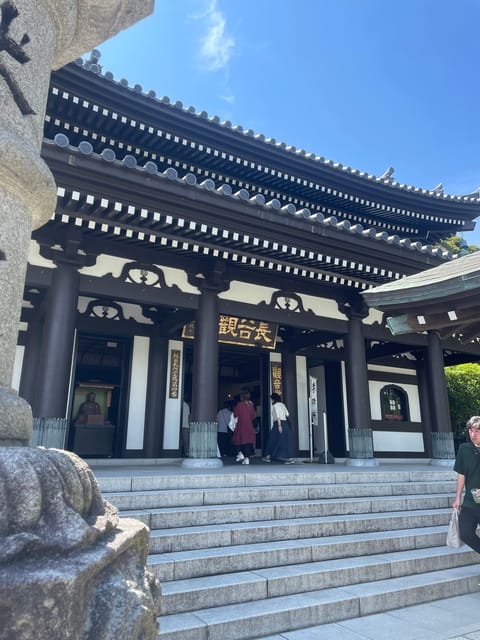
As one explores the cultural heritage of Kamakura, the Hase Temple emerges as a captivating destination that seamlessly blends rich history and contemporary significance. Founded in 736, this iconic site has long been revered by locals and foreign visitors alike, offering a glimpse into Japan’s deep-rooted traditions.
| Architectural Features | Seasonal Highlights | Spiritual Significance |
|---|---|---|
| Impressive wooden Buddha statue | Blooming gardens with diverse flora | Representation of Kannon, the Goddess of Mercy |
| Traditional Japanese design | Stunning views of the coastline | Devotion and cultural preservation |
| Winding pathways through the grounds | Changing colors and foliage | Cherished memories and transformative experiences |
| Intricate craftsmanship and attention to detail | Seasonal festivals and cultural events | Connection to Japan’s enduring spiritual legacy |
Exploring the Hase Temple allows visitors to enjoy Kamakura’s cultural heritage, fostering a deeper appreciation for Japan’s enduring traditions.
Frequently Asked Questions
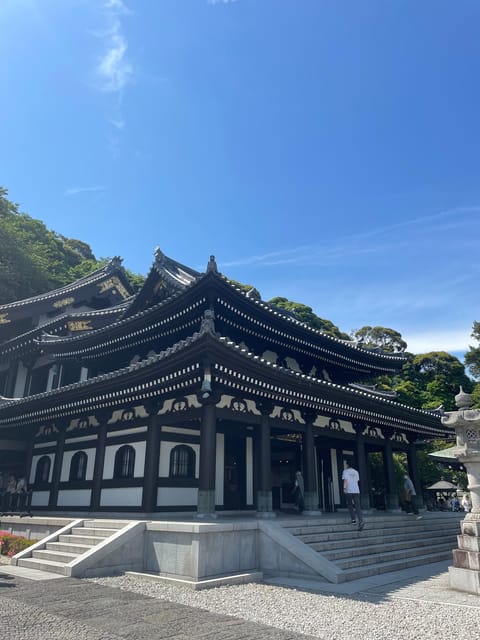
Can I Take Photos Inside the Temple?
Yes, visitors are generally permitted to take photos inside the Hase Temple. However, it’s important to be respectful and avoid disrupting the temple’s serene atmosphere or interfering with any ongoing religious activities.
Are There Any Dress Code Requirements for Visitors?
There are no strict dress code requirements at Hase Temple, but visitors are encouraged to dress respectfully. Casual, comfortable clothing is fine, but it’s best to avoid overly revealing or casual attire out of consideration for the temple’s spiritual atmosphere.
Is the Temple Accessible for Visitors With Disabilities?
The Hase Temple is wheelchair-accessible, with paved pathways and ramps leading to the main attractions. Visitors with disabilities can comfortably explore the temple grounds and admire the impressive wooden Buddha statue.
Can I Purchase Souvenirs or Traditional Crafts On-Site?
The Hase Temple offers a variety of traditional crafts and souvenirs for visitors to purchase on-site. Visitors can find Japanese artworks, trinkets, and locally-made items to commemorate their experience at this historic and culturally significant destination.
Is There a Recommended Season to Visit the Temple?
The best time to visit Hase Temple is during the spring or fall seasons. The temple’s gardens are particularly beautiful when the cherry blossoms bloom or the autumn foliage is vibrant, creating a serene and picturesque atmosphere for visitors.
Recap
Hase Temple’s towering Kannon statue, exquisite craftsmanship, and serene gardens offer a profound cultural experience. Visitors can enjoy Japan’s spiritual legacy, explore the temple’s rich history, and gain deeper insights through a guided tour. This iconic Buddhist site stands as a testament to the enduring significance of Kamakura’s cherished cultural heritage, inviting guests to witness the exceptional artistry and spirituality that have defined the region for centuries.
You can check if your dates are available here:More Tour Reviews in Kamakura
- Kamakura: Largest Wooden Buddha, Temples, Cultural Experience
- Kamakura: Visit Great Buddha and Shopping Experience
- Kamakura, Craft Your Music Box & Discover Japans Biggest Buddha
- Kamakura Calligraphy Experience
- Tour in Kamakura Great Buddha Shogun Shrine With Photographer
- ZASHIKIMAI Performance by National Theatre in Kenchoji, Kamakura
Not for you? Here's more things to do in Kamakura we have recnetly reviewed
- 6 Best Full-Day Tours In Kamakura
- 2 Best Food Tours In Kamakura
- Tokyo: Kamakura Private Tour English Speaking Driver
- Guided Kamakura Private Tour GREEN NUMBER PLATES
- Kamakura: Best Guided Day Tour With Tea Ceremony
- Kamakura Private Custom Tour With Local Guide
- Kamakura Private Half-Day Vegetarian & Muslim-Friendly Tour
- 3h Private Tour With a Local Photographer
- Kamakura Small Group Onigiri Making and Sake Tasting in Sake Bar
- 【Explore Kamakura – Private 3 Hour】 Guided Walking Tour Special
- Kamakura Magokoro Ramen Cooking Class
- Hayama Imperial Villa and Tateishi Ukiyo-e Private Half Day Tour
